The rapid development of global new energy vehicles will drive the demand for lithium batteries to increase by more than 40% in the next few years. The three giants of Japanese and Korean companies Panasonic, LG Chemical and Samsung SDI occupy the global market. The overseas market is experiencing an explosion in the electric passenger vehicle market, and the market is expanding rapidly. It is expected that the global passenger vehicle power battery shipments will reach 32GWh and 60GWh in 2017 and 2018, respectively, up 45% and 94% year-on-year. Panasonic, LG Chem, and Samsung SDI have a market share of 76% overseas, and their competitive advantage is outstanding.
From the perspective of multi-dimensional analysis, using the mainstream technology route, looking for high-quality partners, using the capital advantage to adopt a low-price strategy, the long-term layout is the key to the strong and strong. Technical route: AESC was gradually eliminated by the market because of the wrong lithium manganate route. Panasonic, LG and Samsung chose the high-nickel ternary route to become the protagonist of the market; partners: Panasonic deeply bound Tesla, At the same time, to further expand the public, LG swept the global customers including Kia, Nissan, GM, Renault, etc., is currently the largest reserve of customers, Samsung's slow pace of major customers for the public, BMW. In terms of packaging specifications: Panasonic is the main cylinder, LG is the main soft pack, and Samsung chooses the square. At present, these three routes have their own advantages and disadvantages, and the later situation needs further investigation.
In order to seize the market, LG and Samsung adopted a low-price strategy, which is currently at a loss. Only Panasonic is profitable, but the loss status is expected to reverse in the next two to three years. In 2016, Panasonic, Samsung and LG sold for an average price of US$190/kwh (about RMB 1,285). This price is much lower than the average price of China's 2000 yuan/kwh during the same period. The low price strategy has brought about an increase in market share, but It also brought about continuous losses. It is estimated that the loss of LG and Samsung will reach RMB 2 billion in 2016. Only Panasonic has a profit. In the future, with the decrease in cost and the increase in scale and the stability of the competitive landscape, it is expected that the loss will be realized within two to three years. .
It is a trend for battery manufacturers and car manufacturers to jointly produce battery systems, and Chinese batteries will compete directly with international giants. The power battery is the core component of the new energy vehicle. In order to protect the battery supply and the battery factory to lock the customer, the deep cooperation between the two will become a trend. After years of cultivation, China's battery companies have made great strides in development. At the same time, China has a complete industrial chain structure and will compete directly with international giants in China and the world.
1. Global power battery growth
1.1 The international power battery industry is about to enter the industry growth period
The field of new energy passenger vehicles will become the pillar of the development of the international power battery market. After years of accumulation, overseas markets will enter the market explosion. Power battery technology has made breakthroughs in the past ten years. New energy vehicles have officially entered the historical arena in response to the era, and the power battery market has also ushered in development. From 2013 to 2016, global power battery shipments increased from 6.9GWh to 43GWh, with an average compound annual growth rate of 84%. Due to the policy of China, the policy of giving more commercial vehicles in the early stage was tilted. Commercial vehicles at this stage The contribution to the power battery is large, and the demand for batteries for commercial vehicles and passenger cars in 2016 each account for half of the total. At present, the penetration rate of new energy buses has been relatively high. After 2016, the growth rate of passenger and commercial vehicle power battery markets has slowed down remarkably. This market is mainly concentrated in China. The overseas market is still in its infancy, so there is limited room for growth in the short term; In terms of the “Trolley Global Super Growth Research IIâ€, we have made an analysis and forecast: the global new energy passenger car market has a bright future, and the sales volume will be ushered in the next few years, so the new energy passenger car market will be the driving force in the short term. The key breakthrough areas of battery manufacturers are also the focus of this report. We expect global passenger car battery shipments to reach 32GWh and 60GWh in 2017 and 2018, respectively, up 45% and 94% year-on-year. Among them, overseas markets will enter the market due to the development of new energy passenger vehicles. During the period, our next analysis also focused on the new energy power battery market.


According to the industry life cycle theory, the power battery industry is about to enter the industry growth period. The industry life cycle mainly includes four stages: introduction period, growth period, peak period and recession period. How to distinguish these four stages is mainly analyzed from the aspects of market growth rate, technical route, entry and exit barriers and market structure. From the perspective of market growth rate, the explosive growth of the international power battery market in the next few years has become a recognized view in the market. From a technical point of view, the current development path of power batteries has been basically determined, ternary materials are the mainstream positive electrode route, graphite is the mainstream negative electrode route, and silicon carbon materials will become the future development direction of negative electrodes. From the perspective of entry and exit barriers, the current power battery market has higher barriers to entry and exit, including higher technical barriers and financial barriers. From the perspective of market structure, the current international power battery competition pattern has gradually become clear. Japanese and Korean companies occupy major international markets. At the same time, various manufacturers occupy the market, global production bases, and adopt low-price strategies to occupy the market, and market competition is intensifying. Secondly, there are many varieties of power batteries in the market, and many battery manufacturers have different products, and the product forms and types are rich. In summary, the power battery industry is about to enter the industry growth period.

The industry has the most investment value when it develops into the growth stage, and it is indispensable to study the international power battery manufacturers to seize the opportunity of the power battery industry. How to seize the opportunity of the power battery industry to become a major problem in the current market. Although the domestic government has introduced many new energy policies in recent years and actively encourages the development of the power battery industry, there are still many gaps between domestic power battery manufacturers and international manufacturers. The development of the domestic power battery industry mainly relies on new energy vehicles guided by government policies. In comparison with the market, the foreign power battery market and industry are more mature. Therefore, it is necessary to study the future development of power battery manufacturers and study the development of international power battery manufacturers.
1.2. Japanese and Korean manufacturers gradually grow into the protagonist of the international power battery market
Due to domestic manufacturers' technology and Chinese government policies, there is not much international power battery market and Chinese market, and there are not many corresponding packages. Due to the development of domestic power battery manufacturers under the highly subsidized policy, although the growth rate is relatively fast, the technology is still lagging behind foreign advanced manufacturers. In the international market without high subsidies, there is no ability to compete with international manufacturers. Currently, there are only There are a small supply of BMW to CATL. At present, Chinese companies have not officially entered the international supply chain. At the same time, due to government policy reasons, many international battery manufacturers have not entered the enterprise catalogue of "Automobile Power Battery Industry Standard Conditions". If domestic new energy vehicle manufacturers use the battery list of manufacturers, they will lose high government subsidies. The policy makes international manufacturers in China. The development has been severely hampered.
Japanese and Korean manufacturers lead the development of international power batteries, and Panasonic, LG Chemical, Samsung SDI, and AESC occupy the main market share. Currently, mainstream manufacturers in the international market include Panasonic, LG Chem, AESC, Samsung SDI and other companies, mainly in Japan and South Korea. The four companies occupy a major part of the international power battery market. Among them, Panasonic is the main power battery supplier of Tesla. After acquiring Sanyo, Panasonic has maintained its position as a market leader with the development of Tesla. More than 30%. LG Chem and Samsung SDI are up-and-comers, with advanced technology and low-cost strategies to quickly open the market, faster growth. AESC is a power battery company jointly established by Nissan and NEC. It has occupied a major market share with the best-selling Nissan pure electric vehicle Leaf. However, due to the wrong battery route selection, it was abandoned by Nissan in 2016 and the current development situation is uncertain. In addition to the above four companies, the international power battery market also has power battery companies such as SK, LEJ, and PEVE that are still in their infancy.
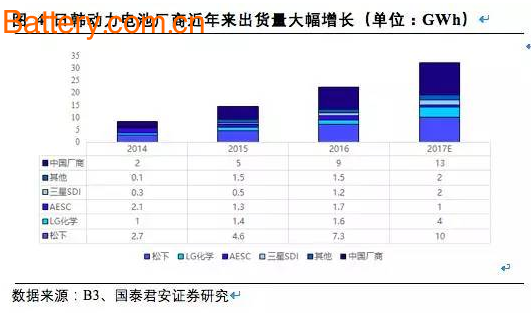
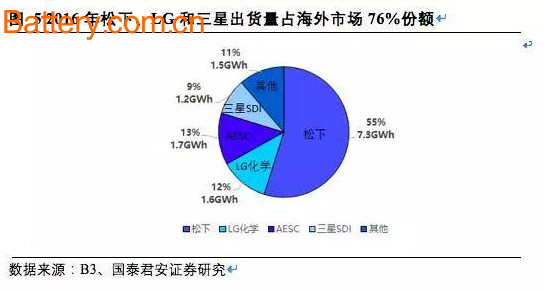
According to the analysis of Porter's five-force model, Panasonic, LG Chem, and Samsung SDI have the most competitiveness and development potential in the international power battery market. The Porter Five Force model analyzes the competitiveness and development potential of the vendor from five aspects: supplier bargaining power, customer bargaining power, threat of substitutes, threats from existing competitors, and threats from potential competitors. Comprehensive analysis, the current Panasonic, LG chemistry, Samsung SDI is currently the most competitive power battery manufacturers on the market, and currently there is still a small market share of AESC, due to the wrong choice of the positive route, facing the risk of being eliminated. Using the Porter Five Force model can show us part of it and want to explore the development of international manufacturers.

2. Comprehensive interpretation of Japanese and Korean power battery manufacturers
2.1. Historical development – ​​R&D strength and partners are key to success
Panasonic - the leader in the power battery industry. After Sony produced lithium-ion batteries in the early 1990s, Matsushita began to develop rechargeable lithium-ion batteries in 1994. By 1998, Panasonic began mass production of cylindrical lithium-ion batteries for notebook computers, and Panasonic built the industry-leading Lithium-ion battery production line. In 2008, Panasonic announced the acquisition of Sanyo Electric, which became the world's largest supplier of lithium batteries. In the same year, Panasonic and Tesla cooperated for the first time. Tesla's first model Roadster used Panasonic 18650 lithium cobalt oxide battery. Since then, Panasonic has been the main power battery supplier of Tesla (the rest only LG Chem provides Roadster). Replacement battery). In 2014, Panasonic announced a joint venture with Tesla to build a super battery factory Gigafactory, and the relationship between the two goes further. Taking advantage of the development of Tesla, Panasonic has been the top spot for power battery manufacturers in recent years.
LG Chem - a rising star in the field of power batteries. LG Chem officially began research and development of lithium-ion batteries in 1998, and mass production in 1999. Although the development time is later than Japanese manufacturers, the company is Korea's largest and world-class chemical company. With decades of material production and R&D experience, it has made breakthroughs in the field of lithium-ion batteries. In 2009, LG Chem cooperated with Hyundai-Kia in Korea to apply its own lithium-ion battery to commercial hybrid vehicles for the first time. Since then, it has officially entered the power battery market, and has cooperated with GM, Renault, Ford, Volkswagen, etc., and the sales of Renault Zoe and Chevrolet Volt have helped the company's power battery market share to reach the world's top level. At present, there are more than ten of the world's top 20 auto brands and LG Chem has cooperation in power batteries, and its development potential is huge.
Samsung SDI - an international power battery company with strong strength. In 2000, Samsung SDI began to enter the field of power batteries. In 2008, Samsung SDI and Bosch jointly established the power battery company SB Limotive. The pure electric vehicle Megacity launched by BMW in 2009 used the power battery produced by SB Limotive. The prototype of the BMW i3 was popular after its launch. Samsung SDI opened the power battery market. In 2013, it signed a long-term cooperation agreement with BMW. In 2015, the company acquired MSBS, which is an international leader in battery project. Since then, Samsung SDI has built a complete business system from battery cells to battery packs. In 2016, the battery explosion of Samsung note7 caused worldwide concern, and its battery was manufactured by Samsung SDI. Samsung SDI lost many orders in the field of consumer lithium-ion battery, but it has little impact on the power battery business.
AESC - wrong route, facing the risk of being eliminated. AESC was established in 2007 by a joint venture between Nissan and NEC. At the beginning of its establishment, the sword was the power battery market. In 2010, the production of lithium-ion batteries for EVs began. The Nissan Leaf, which was launched in the same year, was the power battery developed by AESC. As the Nissan Leaf was widely welcomed by the market after its launch, AESC quickly expanded its market share. However, the good times are not long. Due to the choice of battery route, AESC power battery has no competitiveness in the past. In 2015, Nissan announced that it will open competition in the battery business and purchase batteries from LG Chemical. This is not a small blow to AESC. In 2016, Nissan announced that it would sell a 51% stake in AESC and withdraw from the power battery sector. At this point, AESC was officially abandoned by Nissan, and the current development situation of AESC is still unclear.
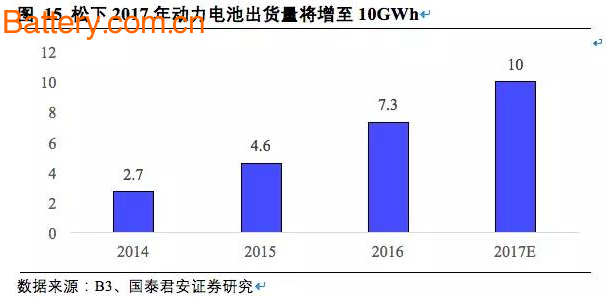
Summary: Strong R&D and production strength and excellent partners are the key to the development of power battery manufacturers. Most Japanese and Korean power battery manufacturers have been working in the field of consumer lithium-ion batteries for many years and then transformed into the development and production of power batteries. Panasonic, LG Chem, and Samsung SDI are all global leading lithium-ion battery companies with rich experience in R&D and production of lithium-ion batteries. AESC directly inherits Nissan and NEC technical resources, and can mass-produce power batteries in just three years, gaining market recognition. In addition, comparing the development history of the four companies, we can find that finding excellent OEMs as partners is an important node in the development process. Once the models launched by the partners are developed, the power battery companies can develop rapidly, and the cooperation is also determined by the battery manufacturers. An important factor in the future development prospects, AESC was abandoned by Nissan.
2.2. Technical route – positive electrode materials are related to fate, cylinders and soft packs have more potential
Panasonic's power battery is taking the lead of the nickel ternary route, and the cylindrical battery energy density is the world leader. At present, most of Panasonic's power battery is supplied to Tesla Model S and Model X. The battery model is 18650 cylindrical. The latest generation 18650 battery positive electrode adopts NCA material, and the negative electrode uses silicon carbon composite material. The monomer energy density can reach 250Wh/kg. The 21700 cylindrical battery cell used in the upcoming Model 3 has an energy density of 340 Wh/kg, which is the highest energy density of cells on the market. In addition to cylindrical, Panasonic also plans to manufacture square batteries to meet other customer needs.
The water philosophy gives Panasonic the technology-leading genes, and working with Tesla brings continual technological innovation to Panasonic. From the development history of Panasonic in the past 100 years, technology leadership is the biggest feature of Panasonic. After Sony and other companies launch new products, Panasonic relies on its strong technical strength to quickly follow up and open the market with high-quality and cheap products (water supply philosophy). Sony's first 18650 battery, good consistency, high energy density, high production efficiency, originally used in DV, notebooks and other electronic products. After Panasonic followed up, the 18650 battery was carried forward, and Tesla cooperated for the first time to use it on electric vehicles. However, the shortcoming brought by the water philosophy is the lack of innovative spirit. The use of NCA positive, silicon carbon negative, 18650 to 21700 and other technological innovations are launched after cooperation with Tesla. The innovative Tesla brings continually to Panasonic. The possibility of technological innovation.
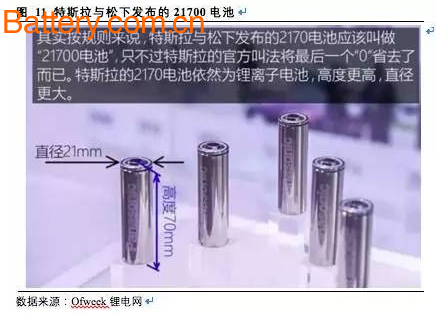
LG Chem is recognized as a leading global soft pack company, and the positive pole mainly takes the ternary route. LG Chemical Power Battery cathode material is mainly ternary NCM, which is the international mainstream route for cathode materials. In terms of battery packaging, LG Chem uses a laminated soft bag design and is recognized as a leading soft pack company at home and abroad. The battery design is flexible, the heat dissipation performance is good, the air is bulged after inflation, and the safety performance is also good. The thick shell of the cylindrical battery and the square battery is theoretically higher in energy density, but the soft pack battery has high requirements on production technology. At present, the price of aluminum plastic film is also relatively expensive.
LG Chem is the only battery company based on chemicals and materials with a strong competitive edge in terms of price and quality. LG Chemical's ternary materials are self-sufficient, and the company has developed diaphragm ceramic coating technology, which has been recognized by the market and has been transferred to well-known diaphragm companies such as Japan Ube and China Xingyuan Materials. LG Chem has been working in the field of soft pack batteries for a long time. In order to make full use of the internal space of electronic equipment, the world's first stepped soft pack battery and hexagonal soft pack battery were designed. Different models have different requirements for the shape and size of power batteries. In order to expand the market and meet the needs of more customers, LG Chem has selected soft packs in the field of power batteries. In addition, LG Chem itself has a large product line of chemical materials. It has the synergy of the industrial chain when developing lithium batteries. It can introduce its advanced materials technology into its product design for the first time, while improving the quality and passing the scale. Chemical production reduces costs.

Samsung SDI power battery positive electrode uses ternary materials, the package form is mainly square, and actively follow the production of 21700 battery. Samsung SDI power battery cathode material uses ternary NCM and NCA materials. In addition to Panasonic, Samsung SDI is the most important NCA power battery manufacturer. Its NCA supplier is Korean company ECOPRO. The battery is mainly packaged in square battery. The advantage of the square battery is that it can produce large-capacity single-cell batteries. The design requirements for BMS and PACK are lower, but there are disadvantages such as poor consistency, inconsistent model specifications, and low energy density. Compared with soft packs and cylindrical batteries, Have development potential. In order to further expand the market, with Tesla released 21700 cylindrical battery, Samsung is also planning to launch the same model battery.
The huge internal demand made Samsung SDI fail to actively follow the market development trend, and the development of power battery is behind Panasonic and LG Chem. In the current global small battery market share, Samsung SDI has a market share of over 20%, and the rest of Panasonic, LG Chemical, and ATL market share are around 10% to 15%, mainly due to its strong technical strength. The huge demand within the Samsung Group is basically digested by Samsung SDI. A large amount of domestic demand has achieved the status of Samsung SDI small lithium battery leader, but at the same time, the company failed to follow the market in time for technological development, and the power battery products failed to receive attention in the early stage of development. Although the power battery project has been actively followed in recent years, the company's NCM and NCA products are not far behind LG Chemical and Panasonic respectively.
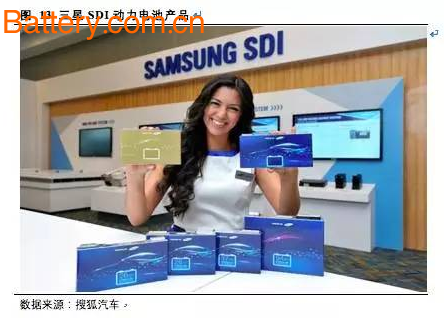
The AESC power battery adopts a soft package design, and the positive electrode material takes the lithium manganate route, facing the risk of being eliminated. The current mainstream market in the international market is the development of high-nickel ternary materials, and AESC is one of the few power battery companies in the industry that uses lithium manganate as a positive electrode material. Although the price of lithium manganate is relatively cheap, but the energy density is low and the cycle performance is poor, there is no outstanding advantage compared with lithium iron phosphate and ternary materials. It is precisely because the positive electrode route selects lithium manganate that AESC is facing the risk of being eliminated by the market. Although there are attempts to transform to the ternary material route, but because the development lags behind other competitors, the products are not yet competitive in the market. At present, the transfer of AESC is under discussion, and the direction in which AESC will develop in the future has not yet been finalized.
AESC technology is the industry leader, but relies on the stable demand of Nissan, does not change the cathode material route, adheres to lithium manganate, resulting in no longer competitive advantage. The AESC power battery is designed with a soft bag. The Nissan Leaf is the first model equipped with an AESC power battery. Once it was launched, it was widely welcomed by the market, reflecting the strong technical strength of AESC. Lithium manganate was initially selected as the positive electrode route because the lithium manganese oxide battery was mature in production process, low in cost and high in safety, and it was an excellent choice for power batteries. However, with the rapid development of power battery technology, the production process and safety of ternary materials have been gradually solved, and it has become the mainstream of the market. The elimination of the lithium manganate route is only a matter of morning and evening. AESC has changed its cathode material route because it is over-reliant on Nissan. It does not follow the market development trend and insists on lithium manganate. The competitive advantage accumulated in the past has gradually disappeared. In 2016, Nissan officially abandoned it.
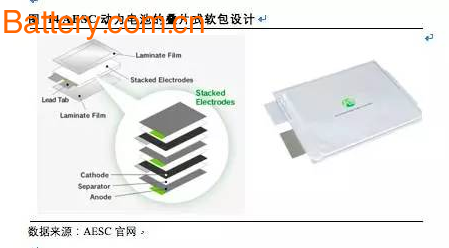
Summary: The choice of the positive route is related to the fate of the company, and the development route must follow the market trend. The current ternary materials are the mainstream of market development, and the high-nickel ternary materials are the future development direction. The lithium manganate material selected by AESC was suitable at the time, but when the subsequent market changed, AESC failed to change the route in time, resulting in an advantage. Regarding the power battery package form, from the current market product observation, square, cylindrical, and soft packages have no small market, but by comparing the advantages and disadvantages of the three package forms, cylindrical and soft-pack batteries have more development prospects. Power battery is a typical technology-intensive industry. Although the current technical route has been generally determined, there are still many problems that have not yet been resolved. If power battery companies want to lead their opponents in the future, technology will play a decisive role.
2.3. Sales situation——Open the market with low price strategy, based on long-term
Panasonic is Tesla's main supplier of power batteries, and its shipments rank first in the industry and will continue to maintain rapid growth in the future. Since the launch of the Tesla Model S in 2012 and the Model X in 2015, both models have been sought after by the market. Panasonic is the sole supplier of its batteries, and its shipments have maintained a high growth rate. In 2016, the power battery shipments were 6.7GWh, of which about 6GWh was supplied to Tesla. With the release of Model 3 in August this year, the capacity will be gradually released, and Panasonic's power battery will continue to maintain rapid growth. It is expected that power battery shipments will reach 10GWh this year.

LG's chemical power battery sales have grown steadily, with great development potential, and sales will increase significantly this year. LG's chemical power battery shipments have steadily increased from 2014 to 2016, and the growth rate is stable, but the total amount is not large. In the past two years, LG Chem's power battery customers have been in the initial stage of development, and the sales volume of the models is not high. Therefore, LG Chemical's shipments have not increased significantly. This year's new hot-selling Chevrolet Bolt and classic best-selling models Nissan Leaf, Renault Zoe and other pure electric vehicles are powered by LG Chem. We expect LG chemical shipments to increase significantly to around 4GWh this year.
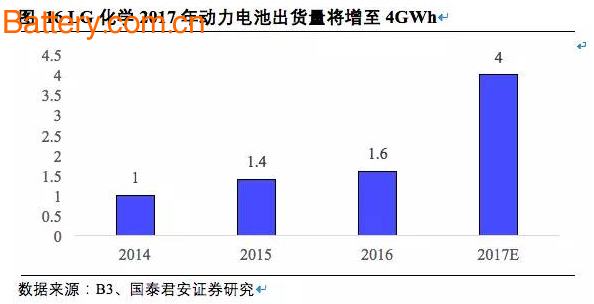
Samsung SDI's sales of power batteries have grown rapidly in recent years, and sales are expected to exceed 2GWh. From 2014 to 2016, Samsung SDI power battery shipments are small, but it has been in a state of rapid growth, mainly the company's largest customer, BMW, which has developed rapidly in the field of new energy vehicles in the past three years, driving the power battery shipment. the amount. In 2017, BMW's new energy vehicle sales will maintain rapid growth, and the company is also actively expanding new customers. It is predicted that Samsung SDI power battery shipments will reach 2GWh this year.

The main shipments are digested by Nissan Leaf. The new Leaf is now being converted to LG Chemical Power Battery, and sales in 2017 are likely to decrease significantly. AESC power battery shipments have maintained rapid growth after the listing of Nissan Leaf, but in the past two years due to battery life, Nissan Leaf sales have declined, while AESC shipments are all dependent on Leaf digestion, so AESC battery shipments in the past two years Compared with 2014, the decline is obvious. With the announcement of Nissan’s abandonment of AESC last year and the 2016 Leaf to use the power battery provided by LG Chem, AESC’s battery shipments this year may be significantly reduced.

Summary: In 2017, in addition to AESC, Panasonic, LG Chemical, Samsung SDI power battery shipments will continue to grow at a high rate, but from now on, sales growth has not brought profit. Based on comprehensive information, we estimate that the average sales price of power batteries of the three companies in 2016 is about 190 US dollars per kWh (about 1285 yuan). Compared with the price of 2,000 yuan per kilowatt in China in 2016, this price is very competitive. force. However, the low-price strategy has brought not only an expanding market share, but also sustained losses. In addition to Panasonic's high market share, the current power battery business is in a small profitable state. LG Chem and Samsung SDI power battery business have With continuous losses for many years, it is estimated that the two power battery businesses in 2016 will have a loss of over RMB 2 billion. But in the long run, this is the development strategy chosen by LG Chem and Samsung SDI. It will occupy the market ahead of time through lower prices, squeeze the current opponent's living space, and maintain business development with the strong financial strength behind the group. In the future, with the development of cathode materials to higher energy density and higher cost of high-nickel ternary, the market demand will explode, and the profit prospects of power batteries are broad.
2.4. Factory layout - actively deploying global production bases and occupying the market ahead of schedule
Panasonic power battery factories are mainly distributed in Japan, the United States, and China. From the perspective of factory layout, the Chinese market and the US market are the focus of Panasonic's development. Panasonic's current Panasonic power battery plants are mainly distributed in Japan, the United States and China. The Japanese factory is currently the production base, and the Model 3 and Model X batteries are all produced in Japan. The US factory is a $5 billion Gigafactory joint venture with Tesla, and Panasonic's capital contribution is about 30%. At present, the plant's power battery is completed in the factory during the construction of the production side. According to the Tesla plan, the Gigafactory capacity will reach 35GWh in 2018, which can be used by 500,000 electric vehicles. Panasonic's factories in China include Dalian and Suzhou, both of which are built in the Chinese market. The Dalian plant produces square batteries. After the completion of the project, the battery capacity can be used for 200,000 electric vehicles. The first phase of the project has been put into production. The Suzhou plant is a joint venture between Panasonic and Suzhou Jiexin, which produces 18650 cylindrical batteries. It is expected to be put into operation in the second half of this year. It is expected to reach 100 million units in 2017.
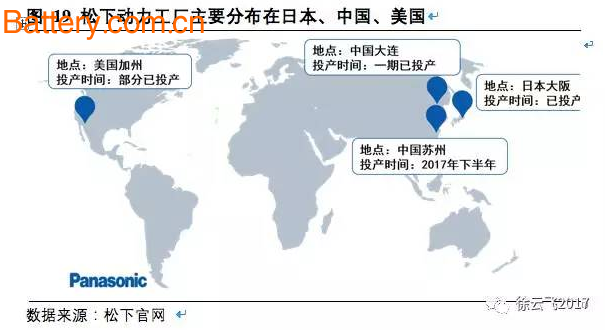
LG's chemical power battery plants are mainly distributed in China, the United States, Europe and South Korea. From the perspective of factory distribution, LG has the most important power battery market in the world. In order to narrow the market distance and reduce the cost of enterprises, LG Chem has four power battery production bases in the world, including Nanjing, China, Wucang, South Korea, Holland, Wroclaw, Poland, and Nanjing, China. Poland's production capacity is second. According to the planning of LG Chemical Power Battery Capacity, in 2016, the company's power battery capacity will meet the demand of 50,000 electric vehicles worldwide. By 2020, the company's production capacity can meet the demand of 200,000 electric vehicles.

Samsung SDI power battery factories are mainly distributed in China, Europe and South Korea. From the perspective of factory distribution, Samsung SDI focuses on the development of China and Europe. Samsung SDI power battery production base is mainly distributed in Ulsan, South Korea, Xi'an, China and Ged, Hungary. The factory in Ulsan, South Korea is the earliest. Currently, it mainly supplies power batteries for BMW I3 and I8. Xi'an Plant Samsung Ring New is a joint venture power battery production base of Samsung SDI and Anqing Ring. The current annual production capacity can meet the demand of 40,000 electric vehicles. The battery plant in Hungary is currently under construction, but the official production will take place in the second quarter of 2018, and the annual production capacity is expected to meet the demand of 50,000 electric vehicles.
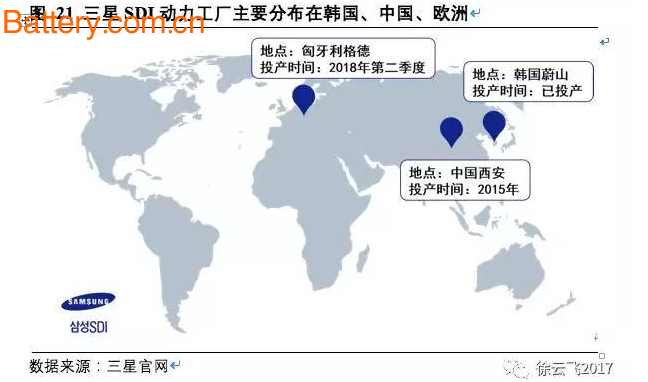
AESC is a Nissan holding company, which is designed to meet the internal needs of the company. There is no overseas plan in the early stage. Currently, there is only a production base in Japan. Since AESC's mission is to provide power batteries for Nissan, it is doomed that AESC will not actively follow the mainstream development of the market. When AESC's power battery technology is leading internationally and Nissan's Leaf sales are gratifying, Nissan will not allow AESC to provide power batteries for other manufacturers on a large scale and squeeze its market share. Eventually, AESC was out of touch with the market and failed to go abroad to build a battery production base overseas to expand its business.
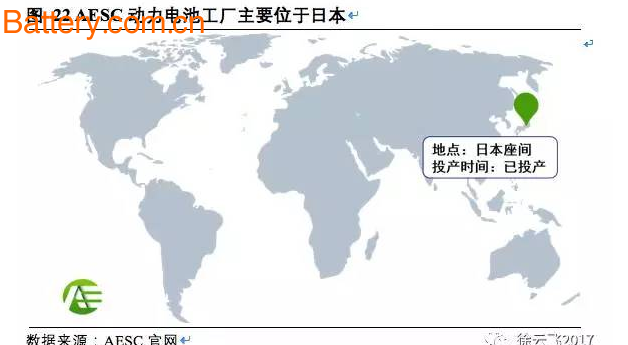
Summary: The Chinese market is the absolute focus of the development of international power battery manufacturers. Panasonic, LG Chemical, and Samsung SDI have been in China for a long time. After the policy barriers are greatly reduced in the future, Chinese domestic manufacturers will compete directly with these three manufacturers in the domestic market. . In addition to China, Panasonic is more inclined to the US market, Samsung is more inclined to the European market, and LG Chemical has a layout in the US and Europe, which can also be drawn from the current major partners, Panasonic and Tesla, Samsung. SDI and BMW, LG Chem & GM, Renault. From a layout perspective, LG Chem's layout has more potential for development.
2.5. Material supplier – international material supply chain helps reduce costs
Panasonic's battery raw materials are mainly from Japanese domestic suppliers, and Chinese manufacturers are expected to enter the supply chain in the future. The suppliers of Panasonic's upstream battery are mainly from Japanese manufacturers, and Chinese companies also have a small supply. Among them, the NCA batteries supplied to Tesla are all from Sumitomo Metal, and the negative electrode is mainly from Hitachi. At the same time, Chinese manufacturer Betray provides some silicon-carbon anode materials. The separators are all supplied by Sumitomo Chemical, and the electrolyte is supplied by Mitsubishi. In terms of supplier selection, Panasonic tends to Japanese domestic companies. This is because the pursuit of battery performance, Japanese manufacturers' technology is more mature and advanced, but it can also be seen that Chinese manufacturers gradually enter the supply chain, and the future with China The maturity of the manufacturer's technology and processes will take up more share with cost advantages.
LG Chemical's battery raw materials are partially produced, and at the same time actively introduce foreign excellent suppliers to reduce battery costs. LG Chem relies on advanced materials development and analytical capabilities, and LG Chem produces its own positive electrode and electrolyte. On the other hand, the company is also actively introducing excellent foreign suppliers, establishing strategic partnerships with suppliers to ensure stable quality and supply, while minimizing costs and meeting market demand. LG Chemical's positive electrode suppliers are mainly L&F, Umicore, Nichia, etc. The main negative electrode suppliers are Mitsubishi Chemical, Hitachi Chemical, Betray, etc. The main separator suppliers are Toray, SK, etc. The main electrolyte supplier is Jiangsu Guotai.
Samsung SDI battery is actively developing raw material suppliers, and there are many quality suppliers, which will help reduce battery cost and maintain competitiveness. The Samsung supplier structure is similar to LG Chem. It produces its own positive electrode and the rest of the materials are supplied by external suppliers. The supplier has a wide range of sources, mainly distributed in China, Japan and Korea, which is conducive to maintaining material quality and reducing costs. The main anode suppliers include Umicore, L&F, ECOPRO, the main anode suppliers Betray, Hitachi Chemical, and the main separator supplier Asahi Kasei. The main electrolyte suppliers are Xinzhoubang and Mitsubishi Chemical.
AESC upstream raw material suppliers are mainly from Japan. AESC is similar to Panasonic, and is basically supplied by Japanese domestic manufacturers. The main supplier of lithium manganese oxide is the Mitsui Metallurgy, the ternary material is Umi, the negative supplier is Hitachi Chemical, and the separator supplier is Asahi Kasei and Ube. The supplier is Mitsubishi Chemical. There are no Chinese manufacturers in AESC's supply chain.

Summary: Japanese battery manufacturers are more inclined to domestic material manufacturers, and the Korean battery manufacturer supply chain has achieved full internationalization, fully introduced market competition, and actively adopts the supply of excellent Chinese material manufacturers. The material cost of Korean battery manufacturers is more competitive than Japanese manufacturers. Advantage. In general, Japanese and Korean material manufacturers are still the mainstream of the current international supply chain, while China's outstanding enterprises are gradually entering the supply chain. This is because the current Japanese and Korean manufacturers started earlier and the technology is ahead of China. However, with the determination of the material technology route and the breakthrough of Chinese manufacturers' technology, in the future, Chinese material manufacturers are expected to become mainstream manufacturers in the international supply chain with high cost performance.
2.6. Vehicle customers - battery manufacturers and vehicle companies rely on each other
Panasonic's vehicle customers are mainly Tesla, and the rest are Volkswagen, Ford and many other manufacturers. Panasonic's power battery customers are distributed in Europe and the United States, concentrated in the United States. The main customer of the power battery is Tesla. In 2016, 6.2GWh of 7.3GWh of power battery was supplied to Tesla. At the same time, Tesla also claimed that Panasonic is the only battery supplier of Model 3, and the future with Model 3 Hot sales, Panasonic's market share will be further stabilized. In addition to good cooperation with Tesla, Panasonic is also the largest power battery supplier of Volkswagen Group and Ford in 2016. Volkswagen Group's brands Volkswagen, Audi, Porsche and many other new energy models and Ford's best-selling C- MAX, Fusion, etc. all use Panasonic power batteries. At the same time, Panasonic is actively expanding the market to provide power batteries for Daimler, Nissan and many Chinese manufacturers.
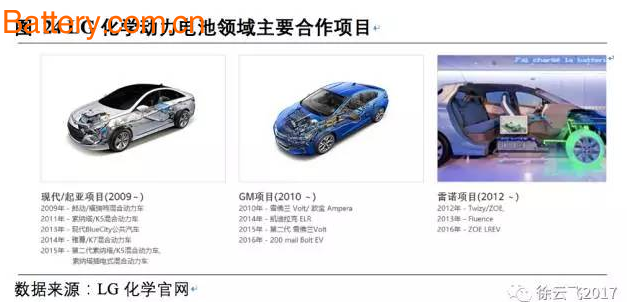
LG Chem has the largest number of customers in the world, and its major downstream manufacturers include Hyundai, GM, Renault and Nissan. At present, 10 of the world's top 20 auto brands cooperate with LG Chem in power batteries. Its partners include GM, Ford, Mitsubishi, Renault, Hyundai, Volvo, Volkswagen, Audi, Daimler, SAIC, FAW and other globally renowned manufacturers. . LG Chem mainly supplies power batteries for Hyundai, GM and Renault. In 2016, the three companies accounted for more than 80% of the total shipments. Representative models include Chevrolet Bolt and Renault Zoe. With Nissan Leaf starting to use LG Chem's power battery, Nissan will this year Become one of LG Chem's major customers.

Samsung SDI power battery customers are mainly BMW and Volkswagen. At present, Samsung's power battery market is mainly concentrated in Europe. The main customers are BMW and Volkswagen. BMW is the company's largest customer. The growth of the company's power battery is mainly from BMW, and the representative models are BMW i3 and BMW i8. 2016 company Shipments to BMW accounted for more than 70% of the total, and Volkswagen accounted for 20%. The rest of the customers are companies such as Daimler and Fiat, but the amount is not large.

AESC's main customer in 2016 is Nissan, and it may be transformed into the Chinese passenger car field in the future. AESC's largest customer in previous years is Nissan, but since the new Leaf is switched to LG chemical batteries, AESC is hard to make a difference in the passenger car field. However, there is news that AESC will be acquired by China Jinshajiang Capital. The specific matters are under negotiation. At the same time, according to the fifth and sixth batch of new energy vehicle recommendation catalogue issued by the Ministry of Industry and Information Technology of China, Changlong Bus uses the power battery provided by AESC to appear in the catalogue. From the current development situation, the future AESC may be transformed into the Chinese bus field.

Summary: The binding of power battery companies and vehicle manufacturers has become a development trend. In the case of power battery companies, the sales performance of OEMs directly affects the development of their own power battery business. The development trend of the new energy vehicle market is unstoppable. Traditional vehicle manufacturers have huge room for growth in this field, so as much as possible at present. The bound vehicle manufacturers cooperate with themselves, and the future profit space is also higher. For the whole vehicle manufacturer, the power battery is the core component of the new energy vehicle. Its R&D barriers are high and the certification time is long. It can only be purchased from outside in a short time, and the excellent quality, sufficient output and low price are the choice of partners. The first thing to consider is that Panasonic, LG Chem, and Samsung SDI are the best choices in the current international power battery market.
3.1. äºæŸçŠ¶æ€æˆ–将在两至三年åŽæ‰è½¬
多é‡åŽŸå› 导致国际厂商çŸæœŸæŒç»äºæŸã€‚éšåŠ¨åŠ›ç”µæ± 市场å‰æ™¯æ˜Žæœ—,销é‡ä¿æŒé«˜é€Ÿå¢žé•¿çŠ¶æ€ï¼Œä½†å¦ä¸€æ–¹é¢æ¥çœ‹ï¼Œå½“å‰åŠ¨åŠ›ç”µæ± 厂商的盈äºæƒ…况å´ä¸æ€Žä¹ˆä¹è§‚。除市场龙头æ¾ä¸‹åœ¨åŠ¨åŠ›ç”µæ± 业务上有盈利之外,其余å‡å¤„于æŒç»äºæŸä¹‹ä¸ã€‚这其ä¸æœ‰å‡ ä¸ªåŽŸå› ï¼Œä¸€æ˜¯å½“å‰åŠ¨åŠ›ç”µæ± 市场处于起æ¥é˜¶æ®µï¼Œæ•´ä½“市场较å°ï¼Œè€ŒåŠ¨åŠ›ç”µæ± ç ”å‘时间长且投资大,å„大公å¸å‡åœ¨å…¨çƒä¸»è¦å¸‚场新建工厂,以应对未æ¥å¸‚场的需求。二是为抢å 市场份é¢ï¼ŒåŒ…括LG化å¦ã€ä¸‰æ˜ŸSDIå…¬å¸åœ¨å†…å‡é‡‡å–低价ç–略。å‡å€Ÿè‡ªèº«è´¢åŠ›ï¼Œç»´æŒåŠ¨åŠ›ç”µæ± 业务,æå‰æŠ¢å å¸‚åœºï¼Œæ·˜æ±°å¯¹æ‰‹ã€‚ä¸‰æ˜¯æ— æ³•å®Œå…¨è¿›å…¥ä¸å›½è¿™ä¸ªæœ€å¤§çš„市场å‘å±•ã€‚å› ä¸ºä¸å›½æ”¿ç–åŽŸå› ï¼Œè™½ç„¶æ¾ä¸‹ã€ä¸‰æ˜ŸSDIã€LG化å¦ç‰å…¬å¸åœ¨ä¸å›½å‡æœ‰åŠ¨åŠ›ç”µæ± å·¥åŽ‚ï¼Œä½†æ•´è½¦åŽ‚å•†è¿«äºŽè¡¥è´´åŽŸå› ï¼Œåªèƒ½å¤Ÿé€‰æ‹©ä¸å›½å›½å†…厂商,使得国外厂商空有产能å´æ²¡æœ‰é”€é‡ã€‚
äºæŸæœ‰æœ›åœ¨ä¸¤è‡³ä¸‰å¹´åŽæ‰è½¬ã€‚æ¾ä¸‹ã€LG化å¦ã€ä¸‰æ˜ŸSDIç›®å‰åŠ¨åŠ›ç”µæ± æˆæœ¬å’Œä»·æ ¼ç›¸å·®ä¸å¤§ï¼Œè€Œæ¾ä¸‹èƒ½å¤Ÿç›ˆåˆ©çš„åŽŸå› ä¸»è¦åœ¨äºŽå¸‚场份é¢çš„领先,当å‰åŠ¨åŠ›ç”µæ± 业务è¥ä¸šæ”¶å…¥åœ¨20亿美元左å³ï¼ŒåŠ¨åŠ›ç”µæ± 出货é‡7.3GWhã€‚æ ¹æ®æˆ‘们估计,两年åŽLG化å¦çš„åŠ¨åŠ›ç”µæ± å‡ºè´§é‡æœ‰æœ›è¶…过7GWh,è¥ä¸šæ”¶å…¥ä¹Ÿåœ¨20亿美元左å³ï¼Œè™½åŠ¨åŠ›ç”µæ± ä»·æ ¼è¾ƒçŽ°åœ¨å¯èƒ½ä¼šæœ‰20%å·¦å³çš„下é™ï¼Œä½†æˆæœ¬ä»Žå½“å‰çš„NCM 111到未æ¥çš„NCM 523å’ŒNCM 622会有10%以上的é™å¹…,åŒæ—¶å›ºå®šæˆæœ¬ä¹Ÿè¢«è¿›ä¸€æ¥æ‘Šè–„,在市场ä¸ç»§ç»è¿›è¡Œä»·æ ¼æˆ˜çš„çš„å‰æ下有较大希望实现盈利。三星SDIå¯èƒ½éœ€è¦ä¸‰å¹´å·¦å³çš„时间æ‰èƒ½å®žçŽ°ç›ˆåˆ©ã€‚
3.2. 与整车厂商åˆèµ„ç”Ÿäº§ç”µæ± æˆå‘展潮æµ
åŒæ–¹å½“å‰å¤„于互相ä¾èµ–状æ€ï¼ŒåŠ¨åŠ›ç”µæ± 厂商在积æžæ‹“展市场,厂商也在积æžå¯»æ±‚æ€§ä»·æ¯”æ›´é«˜çš„ç”µæ± ã€‚ç”µæ± åŽ‚å•†éœ€è¦å€ŸåŠ©æ•´è½¦åŽ‚商打开市场,æå‰å æ®å¸‚场有利ä½ç½®ï¼Œæ‰©å¤§ç”Ÿäº§é™ä½Žæˆæœ¬ï¼Œæ‰€ä»¥æŸäº›åŠ¨åŠ›ç”µæ± ä¼ä¸šä¸æƒœäºæœ¬ä¹Ÿè¦ç¾ç½²ä¾›è´§åˆåŒã€‚对于整车厂商æ¥è¯´ï¼Œå½“å‰åŠ¨åŠ›ç”µæ± æˆæœ¬å 整车æˆæœ¬è¿‡é«˜ï¼ŒåŒæ—¶è¿˜å†³å®šç€è½¦è¾†çš„ç»èˆªé‡Œç¨‹ï¼Œæ‰€ä»¥éœ€è¦é‡‡ç”¨æ€§èƒ½æ›´å¥½ï¼Œæˆæœ¬æ›´ä½Žçš„ç”µæ± ï¼Œè€Œè‡ªäº§ç”µæ± çŸæ—¶é—´å†…ä¸å…·æœ‰ç«žäº‰åŠ›ï¼Œæ•…æ¤åªèƒ½å¤Ÿå€ŸåŠ©å¤–éƒ¨åŽ‚å•†å°†è¿‡é«˜ç”µæ± æˆæœ¬é™ä¸‹æ¥ï¼Œä¸ºè‡ªå·±æ–°èƒ½æºè½¦æ‰“开市场。
åŠ¨åŠ›ç”µæ± æ˜¯æ–°èƒ½æºæ±½è½¦æ ¸å¿ƒå‘½è„‰ï¼ŒåˆåŠ¨åŠ›ç”µæ± 行业å£åž’较高,为防æ¢å‘½è„‰å®Œå…¨è¢«åˆ«äººæŽŒæŽ§ï¼Œæ•´è½¦åŽ‚å•†ä¸Žç”µæ± åŽ‚å•†åˆèµ„ç”Ÿäº§åŠ¨åŠ›ç”µæ± æˆå‘展潮æµã€‚ç”µæ± æ˜¯æ–°èƒ½æºæ±½è½¦æœ€é‡è¦çš„æ ¸å¿ƒä»¶ï¼Œå³ä¾¿å½“å‰æœ‰è‰¯å¥½çš„åˆä½œï¼Œä½†æœªæ¥è‹¥å¤ªè¿‡äºŽä¾èµ–一家ä¼ä¸šï¼Œå¯¼è‡´å‘½è„‰è¢«åˆ«äººæŠŠæ¡æ˜¯ä¸å¯æŽ¥å—的。所以往往一家ä¼ä¸šä¼šé€‰æ‹©åŸ¹å…»å¤šå®¶ä¾›åº”商,引入市场竞争,åŒæ—¶ç›®å‰æ•´è½¦ä¼ä¸šå³ä¾¿åœ¨æœ‰è‰¯å¥½ä¾›åº”商的情况下,还是会积æžå¯»æ±‚ç”µæ± è‡ªäº§çš„æ–¹æ¡ˆï¼Œä½†é™äºŽæŠ€æœ¯å£åž’çš„åŽŸå› ï¼Œä¸ŽåŠ¨åŠ›åŽ‚å•†åˆèµ„建立公å¸æˆ–工厂æˆä¸ºæ½®æµã€‚ç›®å‰Gigafactoryã€AESCã€PEVEã€LEJç‰åŠ¨åŠ›ç”µæ± 工厂或公å¸ä¾¿æ˜¯åŽ‚å•†å®žçŽ°ç”µæ± è‡ªäº§çš„äº§ç‰©ã€‚
3.3. 未æ¥å°†ä¸Žä¸å›½åŽ‚商在全çƒåŒ–市场ä¸ç›´æŽ¥ç«žäº‰
éšæ”¿ç–力度下é™ï¼Œä¸å›½å¸‚场将与国际市场直接接轨;éšæŠ€æœ¯çªç ´ï¼Œä¸å›½åŽ‚商也将å‚与到国际供应链的竞争之ä¸ã€‚å‰é¢æˆ‘们æ到,当å‰ä¸å›½åŽ‚å•†æ— æ³•è¿›å…¥å›½é™…å¸‚åœºï¼Œè€Œå›½é™…åŽ‚å•†ä¹Ÿæ— æ³•å®Œå…¨æ‰“å¼€ä¸å›½å¸‚场,但这ç§æƒ…况预期ä¸ä¹…å°±ä¼šæ‰“ç ´ã€‚é¦–å…ˆåŠ¨åŠ›ç”µæ± çš„å‘展路线已确定下æ¥ã€‚åšæŒç£·é…¸é“é”‚æ‹¥æœ‰æ ¸å¿ƒæŠ€æœ¯çš„A123已被ä¸å›½å…¬å¸æ”¶è´å’ŒåšæŒé”°é…¸é”‚çš„AESC也被日产抛弃,最åŽç•™ä¸‹æ¥çš„全是走三元路线的ä¼ä¸šã€‚整体å‘展方å‘已确定好,ä¸å›½ç”µæ± ä¼ä¸šåœ¨å—到国家大力扶æŒçš„情况下,有希望未æ¥å‡ 年实现技术çªç ´ï¼Œè¾¾åˆ°å›½é™…先进水平,åƒåŽŸæ¥å…‰ä¼äº§ä¸šä¸€æ ·é€æ¥è¿›å…¥å›½é™…供应链。åŒæ—¶éšç€è¡¥è´´çš„大幅滑å¡ï¼Œå›½é™…åŽ‚å•†çš„åŠ¨åŠ›ç”µæ± å‡å€Ÿä¼˜å¼‚çš„æ€§èƒ½å’Œä½Žå»‰çš„ä»·æ ¼ï¼Œåœ¨ä¸å›½å¸‚场也会更有竞争力,到时候ä¸å›½åŽ‚商将直é¢å›½é™…厂商激烈的竞争。
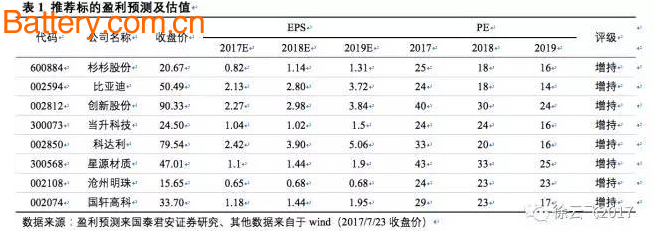
Under Table Drawer Organizer,Under Desk Storage,Desk Hidden Drawer Organizer,Under Table Hidden Drawer
Taizhou Huangyan New Vision Indsutry & Trading Co.,Ltd , https://www.super-factories.com